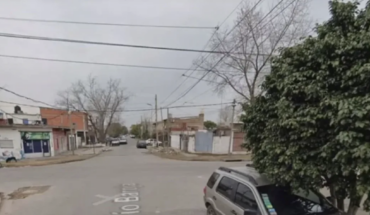The political press dawned monday with criticism of the head of government of Mexico City, Claudia Sheinbaum, for not defending freedom and caring for the rights of their rulers, and abandoning them to the violence of radical groups infiltrated marches to create chaos and Ungovernability. Sheinbaum said street violence in the city was the least bad, explaining that the police’s inaction was because they intervened against anarchists, as those who used these events to provoke through acts are defined for a quarter of a century vandalism, would have turned out worse. That is, they better destroy monuments, shops, restaurants, vehicles, burn down buildings, and own the streets during the hours they want, because enforcing the law would generate more violence. Criticism is taken care of. Sheinbaum anticipated that for the next march on October 2, they will not perform either. Once again, the Historic Center of Mexico City will become Comanche territory. Whoever gets more violent, then, the more chance stakeist will go unpunished. Sheinbaum’s rationale is that if they apply force – legally it is a government – to avoid mismanes and enforce the law, the answer they will have is the boomerang of greatest violence and criticism of being a repressive government, as they used to call the authority when they were opposition. They used political lyforce by the government to push a political agenda and generate support. Now that they’re on the other side, they’re trapped by the reality of being authority or systemic. It is true that these groups are literally seeking to have them dead, because this is how they feed their cause, but the problem is that being a government, inaction has political and legal consequences, and far from defying the problem with anarchists, they strengthen them. Anarchists in Mexico have been escalating violence since December 2009, when they set fire to 28 patrols in Toluca, and detonated explosives at ATMs in that capital, Metepec and San Luis Potosí. In a statement that circulated online, they identified theself as members of the “Simón Radowiski Action Brigade” – an Argentine anarchist who murdered a police chief who died in Mexico 45 years later – and claimed responsibility for those attacks and others six bombings to prove that they are “still active.” A report by the Cisen, now the National Intelligence Center, identifies 17 anarchist groups in the country: Flared Revolution, South Anarko Block, North Anarko Block, Xalapa Libertary Autonomous Block, Aguascalientes Black Block, Anarchist Black Block, House in Movement Chanti Ollin, Autonomous Cells of Immediate Revolution “Praxedis G. Guerrero”, Okupado Casa Naranja Social Center, Magonista Autonomous Collective, Anarchist Student Coordinator, Black Cross Anarchist, Anarchist Federation of Mexico, Front East, Miserable Libertarians, OkupaChe and Wild Reaction, linked to environmental radicals. Between 2010 and 2018, according to a report in Televisa, they participated in 91 violent actions. For example, the explosive devices used in Toluca and Metepec were the same as those used in September 2009 against a bank branch in the south of the capital, in a boutique on an exclusive avenue in the west, and in a distributor Renault in the east, which was re-invigorated by the Autonomous Cells of Immediate Revolution “Práxedis G. Guerrero”, which accompanied his communiqué with a complaint against the construction of a maximum security prison in the vicinity of the Reclusorio Norte, where militant prisoners of the old Communist League 23 September, the People’s Union – which when merged became the Procup – and the EPR are found. In that statement they also mentioned four comrades of his arrested in December 2009, accused of dropping Molotov bombs in southern Mexico City and of theft during street riots in the capital during the March on October 2. This communiqué was disseminated among other sites by the portal lahaine.org, fed from Spain and Latin America by a network of social and extremist organizations among which the collective “Auditorio Che Guevara” actively participates, an “autonomous space of self-glaant work” that exists as a “liberated territory” within Ciudad Universitaria in what until 1968 became known as the Auditorium “Justo Sierra”. This group runs the News of the Rebellion service and the workshop “Ricardo Flores Magón”, the most famous Mexican anarchist, multicited by President López Obrador. There are communicating vessels between at least two of the organizations that claimed the attacks. One is the Animal Liberation Front, which attacked the boutique, which is an anarchist organization that belongs to the networks of the so-called Black Bloc, which arrived in Mexico to support Deputy Commander Marcos and the EZLN in 1994. Although there is no obvious link with the Autonomous Cells, there is an indirect relationship through cyber insurgent networks, under the maximum authority of the guerrilla organization the Insurgent Militias “Ricardo Flores Magón”, which were born in 1996, It operates in the middle of the country, and recruited cadres in Texcoco and Chimalhuacan.Anarchist groups are more serious than the People Lopez Obrador and Sheinbaum are trying to believe, and they have nothing to do with the “conservatives.” Rhetorical contraption is its contradictions, as some of these groups have ramifications with Morena and some of their organic intellectuals informally advise members of the president’s team. As a movement, they are not supporters of him or Morena, those who see as enemies, just as they saw the PRI and PAN governments. Covering the sun with one finger, as they are doing, will not solve street violence, but will incentivize it. The problem they have is the disjunction of external governance or internal governance.
Original source in Spanish
translated from Spanish: The anarchist threat THE DEBATE
October 1, 2019 |





